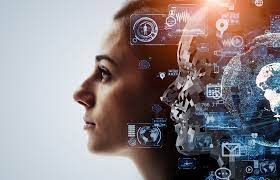Generative AI refers to a subset of artificial intelligence (AI) that focuses on creating or generating new content, data, or information that is not directly copied from existing examples. This type of AI is designed to mimic the creative aspects of human thinking and artistic expression. It has a wide range of applications, including text generation, image synthesis, music composition, and more.
One of the most notable techniques in generative AI is the use of generative models, which are machine learning models trained to generate new data that is similar to a given training dataset. These models learn the underlying patterns and structures of the data during the training process and then use that knowledge to generate new, realistic content.
Some common types of generative models include:
- Generative Adversarial Networks (GANs): GANs consist of two neural networks, a generator and a discriminator, that are trained together in a competitive manner. The generator aims to produce content that is indistinguishable from real data, while the discriminator tries to differentiate between real and generated data. This adversarial process leads to the generator producing increasingly realistic content over time.
- Variational Autoencoders (VAEs): VAEs are generative models that focus on learning a low-dimensional representation of input data. They encode data into a compressed form and then decode it back into the original data space. VAEs are often used for tasks like image generation and data compression.
- Recurrent Neural Networks (RNNs) and Transformers: These architectures are commonly used for generating sequential data, such as text or music. RNNs process sequences step by step, while Transformers can capture long-range dependencies in the data and have been particularly successful in natural language processing tasks.
- Conditional Generative Models: These models take specific conditions or inputs into account when generating new content. For example, a conditional text generator might take a starting sentence as input and then continue the text in a coherent manner.
Applications of generative AI include:
- Text Generation: Generating human-like text for various purposes, such as writing articles, composing emails, and creating conversational agents.
- Image Synthesis: Creating realistic images from scratch or modifying existing images.
- Style Transfer: Transforming the style of an image or artwork while preserving its content.
- Music Composition: Generating new musical compositions or harmonies.
- Video Game Content: Creating game levels, characters, and other assets.
- Drug Discovery: Designing new molecular structures with desired properties.
- Art and Design: Assisting artists in generating new and innovative visual and digital art.
Generative AI has gained significant attention due to its potential to push the boundaries of creativity and innovation across various domains. However, challenges remain, such as ensuring generated content is ethically and responsibly produced and used, as well as addressing issues related to bias and fairness in the generated outputs.

